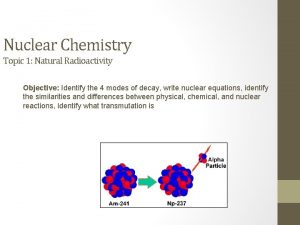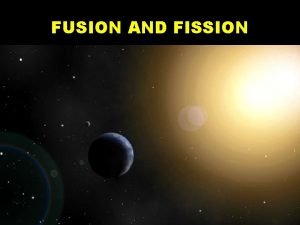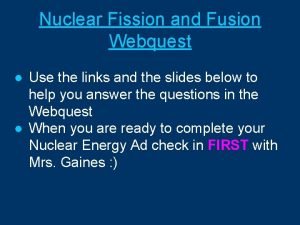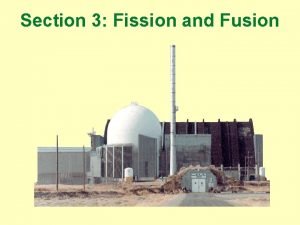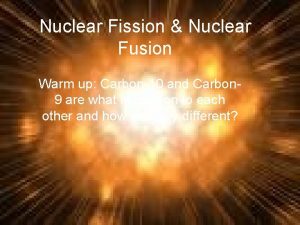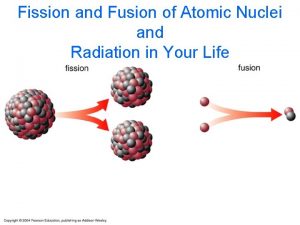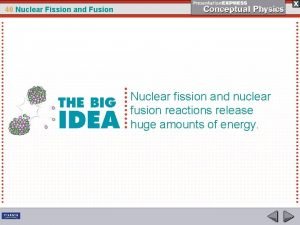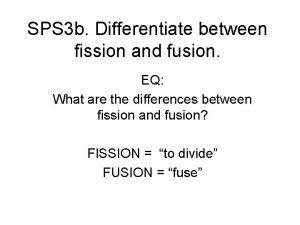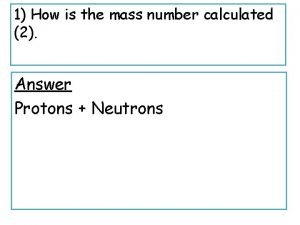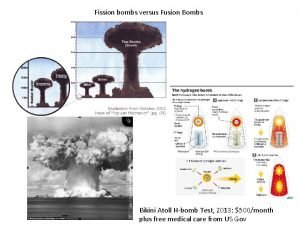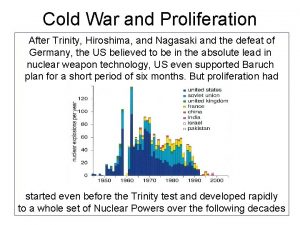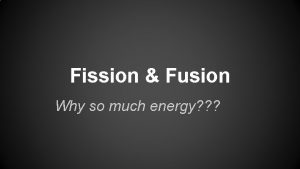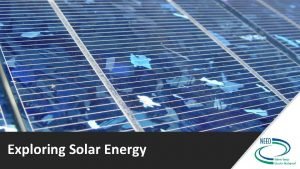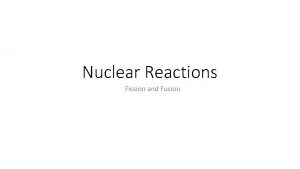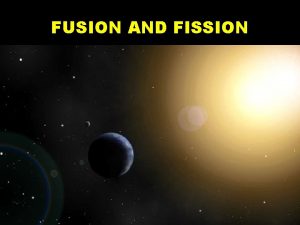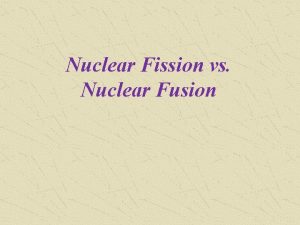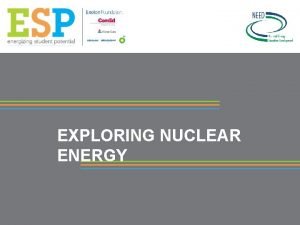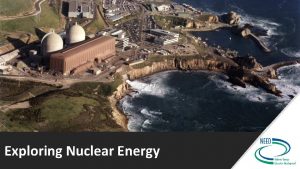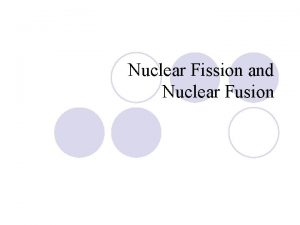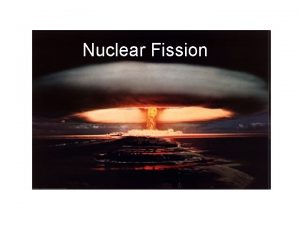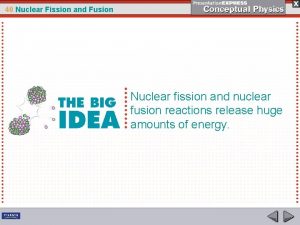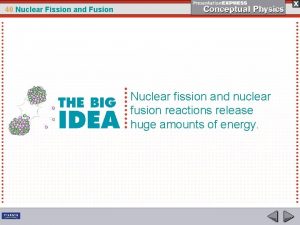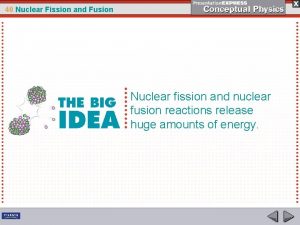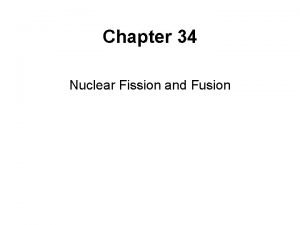EXPLORING NUCLEAR ENERGY Nuclear Fusion and Fission Nuclear














- Slides: 14

EXPLORING NUCLEAR ENERGY

Nuclear Fusion and Fission Nuclear Fusion Nuclear Fission • Small nuclei into large • Immense temperature and pressure • Core of stars • Large nuclei into small • Critical mass to sustain • Two isotopes we use Iron is the “dead end” of both fusion and fission – it is the lowest energy nucleus and cannot be split or fused.

Global Total Primary Energy Supply (TPES) by fuel, 2017 Nuclear provides 5% of total energy and 10% of global electricity generation. [CATEGORY NAME] 22% [CATEGORY NAME] 27% [CATEGORY NAME] 5% [CATEGORY NAME] 32% Data: International Energy Agency [CATEGORY NAME] 10% [CATEGORY NAME] 2%

Top 5 Nuclear Generating Countries, 2016 Country United States Total Generation (b. Kwh) Nuclear Electricity Generation (b. Kwh) Share of country’s total generation 4, 095 805 19. 67% 529 386 73. 04% Slovakia 25 13 54. 25% Belgium 79 41 51. 90% Hungary 30 15 50. 23% France

U. S. Primary Energy Consumption by Source and Sector

U. S. Electricity Production, Electricity Generation by Source 2017 Petroleum 0. 53% Biomass 1. 56% Hydroelectric 7. 31% Geothermal 0. 40% other Solar 0. 31% 1. 33% Wind 6. 32% Coal 29. 99% Nuclear 20. 02% Natural Gas 32. 24% Data provided by US EIA Net Generation by Energy Source

U. S. Electricity Flow 2017 Quadrillion Btu Data: Energy Information Administration

Nuclear Energy Production State U. S. Total South Carolina New Hampshire Illinois Connecticut New Jersey Maryland Pennsylvania Tennessee New York Virginia North Carolina Alabama Arizona Michigan Data: Nuclear Energy Institute % Electricity from Nuclear 20. 02% 58. 14% 57. 11% 53. 43% 48. 38% 45. 64% 44. 26% 41. 56% 40. 74% 32. 97% 32. 68% 32. 42% 30. 64% 30. 56% 28. 82%

Anatomy of a Nuclear Power Plant

Anatomy of a Nuclear Power Plant

Advantages of Nuclear Power • Clean • Plentiful Supply • High energy content in uranium – Small fuel pellet – Can provide base load power – Energy savings in transportation • Operating cost is low after construction

New Nuclear Technologies • Modular, small-scale reactors • Breeder reactors http: //www. energy. gov/scienceinnovation/energy-sources/nuclear Image courtesy of Department of Energy

Food for thought… Of the 15 methods (wedges) proposed by a Princeton University study to stabilize Carbon Dioxide emissions, 13 of them relate to energy use. Implementation of any 7 would accomplish the goal of stabilizing emissions. 1. 2. 3. 4. 5. 6. 7. 8. 9. 10. 11. 12. 13. Efficient vehicles Reduced use of vehicles Efficient buildings Efficient coal power plants Gas instead of coal power plants Capture CO 2 at base load power plant Nuclear power for coal power Wind power for coal power Photovoltaic power for coal power Capture CO 2 at H 2 plant Capture CO 2 at coal-to-synfuels plant Wind H 2 in fuel-cell car for gasoline in hybrid car Biomass fuel for fossil fuel

The NEED Project www. need. org info@need. org 1 -800 -875 -5029 Energy Information Administration U. S. Department of Energy www. eia. gov
 Nuclear transmutation equation
Nuclear transmutation equation Nuclear fission and fusion similarities
Nuclear fission and fusion similarities Fission and fusion similarities
Fission and fusion similarities Nuclear fission and fusion
Nuclear fission and fusion Fission vs fusion
Fission vs fusion Nuclear fission vs fusion venn diagram
Nuclear fission vs fusion venn diagram Are nuclear power plants fission or fusion
Are nuclear power plants fission or fusion Fission vs fusion nuclear
Fission vs fusion nuclear Fission vs fusion energy output
Fission vs fusion energy output Fusion or fission
Fusion or fission Fission and fusion similarities
Fission and fusion similarities Fission vs fusion
Fission vs fusion Rds 37 bomb
Rds 37 bomb Fusion or fission
Fusion or fission Nuclear fusion
Nuclear fusion

